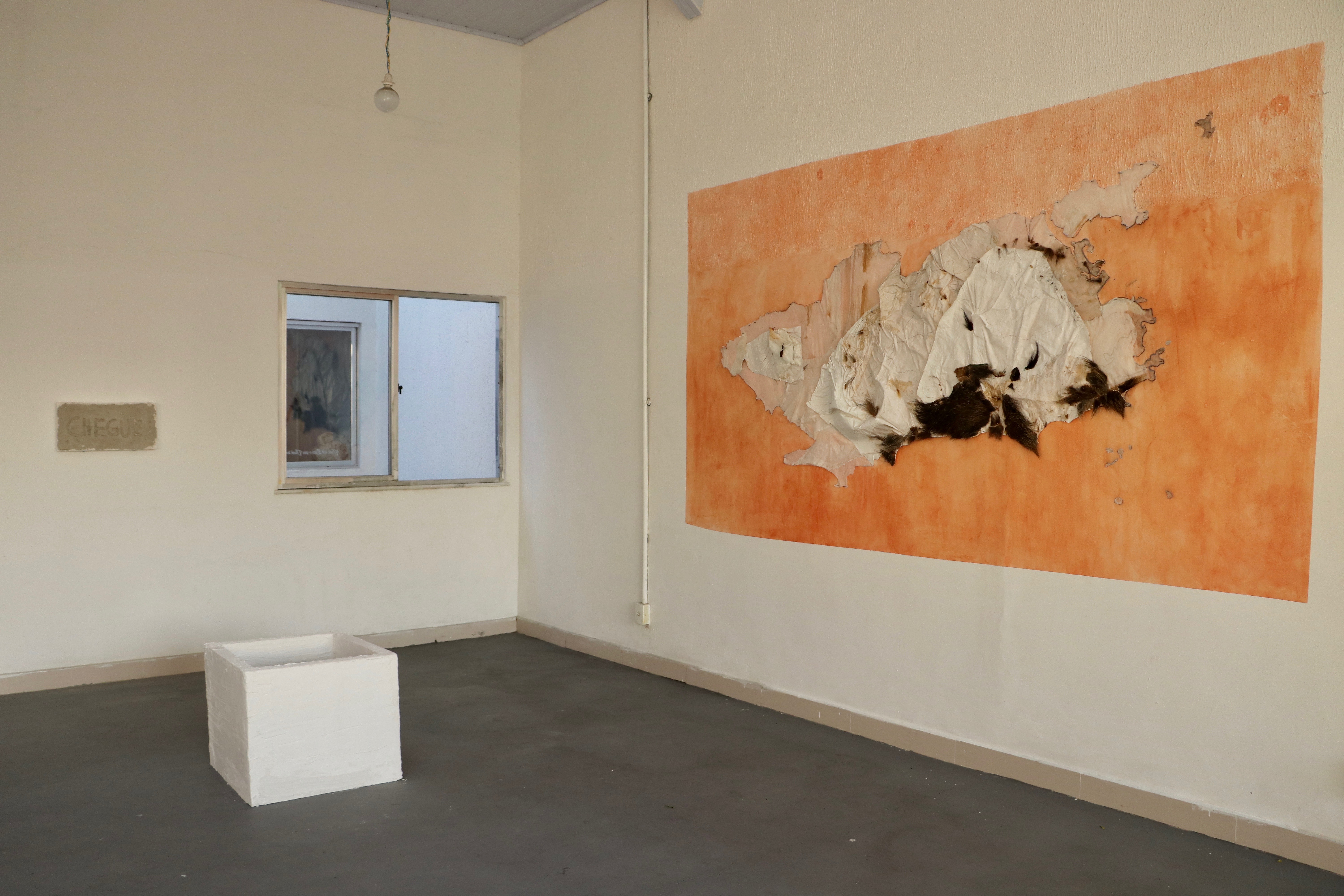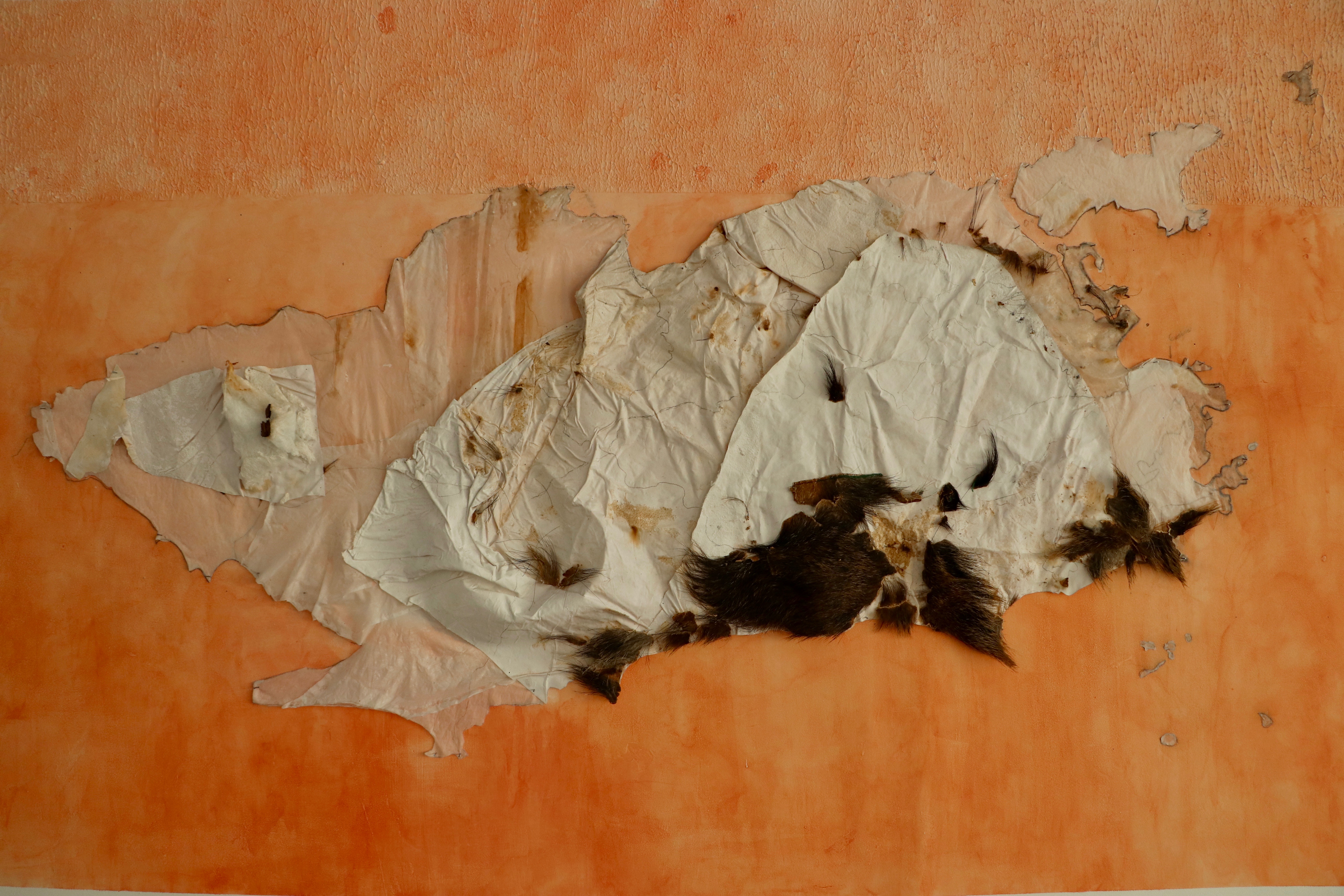Cheguei
work process
background of sculptural installation


Cheguei
2019,
400x300x250 cm,
Diverse sorts of fabric, gesso, wood, foam, glue, skin of a wild European pork, styrofoam, concrete, terracota pigments and water.
“Cheguei” meaning “I arrived” is an installation composed by a map of Rio de Janeiro constructed specially for this work, an object on the ground and a word written on concrete placed on the wall.
This work is an attempt to re-signify the history of the Rio de Janeiro, periferic poor tenement “Cabeca de Porco” (Head of the Pork) and connect it with the actual territorial ordening of the city. This work was developed after many walks through the city, and many talks with diverse favela and cortico dwellers, listening to their stories or struggle and marginalisation, but also to historians and social scientists specialised in the thematic gave shape to my work.
In the last century “Cabeca de Porco” was a cortiso, a living space for many poor families, and was considered by the ruling elite as a wild, dirty space, inhabited by inmoral people. Eviction processes in the city, where then and still are justified as “higienization” processes. This had as a goal to bring hygiene to the place by removing inhabitants. This is part of the history of the construction of the city, and is still a practice nowadays.
I used the skin of a wild European pork to map what I consider really wild in the city of Rio de Janeiro nowadays. The skin is glued to spaces in the map that represent territories inhabited by richer groups. They could inhabit those territories after evictions of the former poor inhabitants. This is the way in which mostly all rich neighbourhoods were created in the city. A sort of wild west of the tropics, where the price of the square meter exceeds the 5000 euro in the richer areas, while 25% of the population in the city has almost no access to the basics.
Cabeca de Porco, was during the last century, a pejorative name given to poor living spaces. This name was a joke related to the idea that some fazendas counted with a “Leao de Chacara” (farm lion), a sort of decoration at its entrance, using an animal that was related to prestige. Many fazendas an important farms counted with it. The decoration consisted on a lion made of bronce or ceramic or other noble material, placed above a sort of pedestal.

Calling poor living spaces a Cabeza do Porco, was denigrating those territories by relating them to an animal with lower symbolic status. In my work I related the skin of a pork actually to the richer territories and present the dried skin of a pork hidden at the interior of a construction.
The word Chequei of the title is related to my observation of the way the city was constructed, by the migration of Europeans at colonial times who at the same time brought African slaves. Each group took their position in society and in the territory, also after the abolition of slavery. A land made of foreigners. Indigenous people’s almost disappeared from the territory.
This work re-signifies the idea of wild, inmoral and dirty; allowing the material to talk about Rio de Janeiro power relations within diverse territories. Work was exhibited at Despina, in Rio de Janeiro, during an open studio event called Senado Tomado.